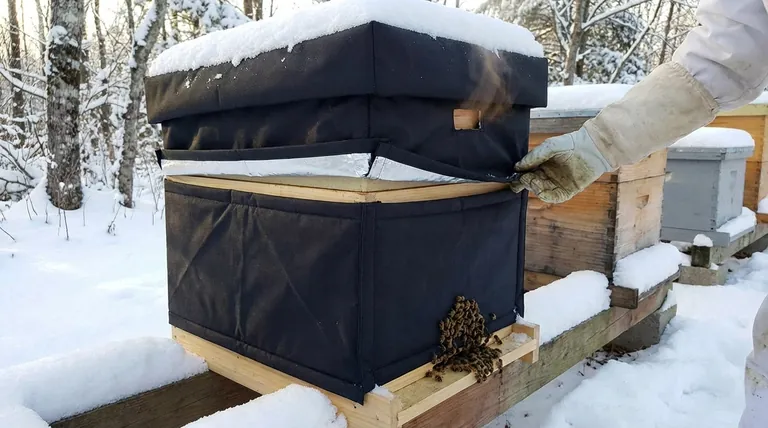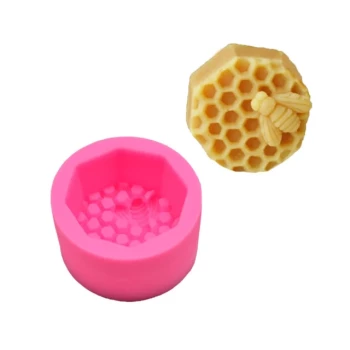In short, you determine if your hive is properly insulated by checking for two critical conditions: the absence of drafts and the management of condensation. A properly insulated hive is not just warm; it is a dry, draft-free environment that allows the bee cluster to effectively regulate its own temperature without fighting excess moisture or cold air intrusion.
The ultimate goal of insulation is not to heat the hive, but to keep the interior surfaces—especially the ceiling—warm enough to prevent condensation from forming and dripping on the bees. A dry winter cluster is a surviving winter cluster.

The Two Pillars of a Well-Insulated Hive
Proper winterization rests on understanding two key environmental factors. Getting these right allows the colony to thrive with minimal stress.
Pillar 1: Draft Control
A draft is uncontrolled air movement that chills the bees and forces them to burn more energy. This is different from intentional ventilation.
Your primary goal is to stop drafts from penetrating the main hive body. Check for cracks or gaps between your hive boxes and seal them if necessary. A tight-fitting telescoping outer cover and a solid bottom board are your first lines of defense.
However, do not seal the hive's entrances. The bees need an entrance for cleansing flights on warm days, and some airflow is essential.
Pillar 2: Moisture Management
A winter bee cluster produces a significant amount of warm, moist air through respiration. When this air hits a cold surface, it condenses into water.
If the inner cover or hive ceiling is cold, condensation will form and drip down onto the cluster. This is a primary cause of winter colony death, as wet bees quickly chill and perish.
Proper insulation, especially top insulation, keeps the inner ceiling surface warmer, closer to the temperature of the air inside the hive. This prevents condensation from forming directly above the bees, allowing the moist air to instead move towards the hive walls or out a ventilation opening.
Observable Signs Your Insulation is Working
During a quick cold-weather inspection, you can look for definitive signs of a properly insulated and ventilated hive.
A Dry Inner Cover
This is your most important indicator. When you briefly lift the outer cover, the underside of the inner cover should be mostly dry. A small amount of moisture around the edges is acceptable, but a soaking wet, dripping cover is a sign that your top insulation is insufficient and your colony is at risk.
A Calm, Centered Cluster
On a cold day, the bees should be in a tight, quiet cluster. If you see bees scattered, agitated, or lining the hive walls, it can be a sign of stress from drafts or moisture. A calm cluster is one that is successfully managing its environment.
Steady Honey Consumption
A colony in a drafty, cold, or wet hive will burn through its honey stores at an alarming rate just to generate heat. While difficult to measure without weighing the hive, a colony that runs out of food unexpectedly early was likely fighting poor environmental conditions.
Understanding the Trade-offs: Insulation vs. Ventilation
Many beekeepers worry about "over-insulating," but the real danger lies in failing to provide adequate ventilation.
The Danger of a Sealed Hive
A completely sealed hive is a death trap. Without a way for moist air to escape, condensation will build up regardless of how much insulation you have. The bees also need a small amount of fresh air.
The Critical Role of an Upper Exit
Providing a small upper entrance or a notch in the inner cover is crucial. This small opening acts as a chimney, allowing the warm, humid air produced by the bees to escape the hive. This works in concert with your top insulation to keep the hive dry.
Reframing the Problem
It is almost impossible to over-insulate a hive if you also provide a path for moisture to exit. The problem is never too much insulation; it is always insulation without ventilation. Your focus should be on wrapping the hive to block wind and insulating the top, while always ensuring a small path for air to get out.
Making the Right Choice for Your Hive
Your approach should be guided by your specific goals and observations.
- If your primary focus is winter preparation: Wrap the hive bodies with a material like tar paper or a commercial hive wrap to block wind, and place a 1-2 inch piece of rigid foam insulation on top of your inner cover, directly under the telescoping lid.
- If your primary focus is a mid-winter check: Your number one test is to quickly lift the outer cover and feel the inner cover. If it's wet, your top insulation is inadequate or your ventilation is blocked.
- If you are seeing signs of excessive moisture: Ensure you have a small upper entrance (about 1/2 inch) for ventilation and consider adding a "quilt box" with wood shavings above the inner cover to absorb excess moisture.
By focusing on creating a dry, draft-free shelter, you provide the stable environment your bees need to manage their own climate and survive the winter.
Summary Table:
| Sign of Proper Insulation | What to Look For |
|---|---|
| Draft Control | No drafts from cracks/gaps; sealed boxes; tight outer cover. |
| Moisture Management | Dry inner cover; no condensation dripping on the cluster. |
| Bee Behavior | Calm, tight, centered cluster; no agitation or scattered bees. |
| Resource Use | Steady honey consumption; no unexpected depletion of stores. |
| Ventilation | Small upper entrance present; moist air can escape. |
Ensure your apiary's winter survival with professional-grade solutions from HONESTBEE.
Proper insulation is critical for the health of your commercial colonies and the success of your operation. HONESTBEE supplies durable, high-performance beekeeping supplies and equipment—including hive wraps, insulated covers, and ventilation aids—designed specifically for the demands of commercial apiaries and beekeeping equipment distributors.
Let our wholesale-focused expertise help you protect your investment. Contact our team today to discuss your needs and discover how our equipment can contribute to a healthier, more productive season.
Visual Guide

Related Products
- Professional Insulated Winter Hive Wrap for Beekeeping
- Professional Galvanized Hive Strap with Secure Locking Buckle for Beekeeping
- HONESTBEE Classic Pry Bar Hive Tool with High Visibility Finish for Beekeeping
- Endless Loop Ratchet Hive Strap
- Professional Drop-Style Hive Handles for Beekeeping
People Also Ask
- Should bee hives be insulated? Protect Your Colony from Moisture, Not Just Cold
- What are the benefits of insulated beehives in cold weather? Boost Winter Survival & Spring Productivity
- Is it always necessary to insulate beehives? A Guide to Winter Survival & Colony Health
- What are the durability features of Bee Blankets? Built to Last in Demanding Apiary Conditions
- Why is it important to insulate beehives during winter? Boost Your Colony's Survival Rate



















